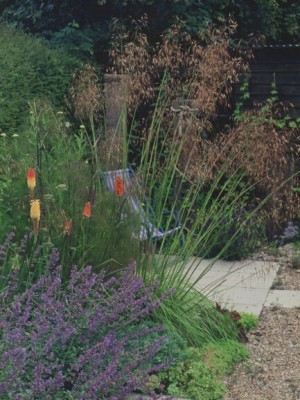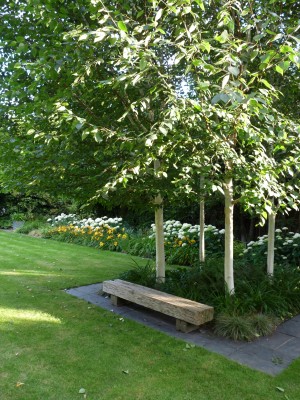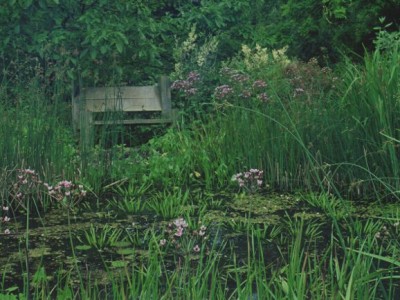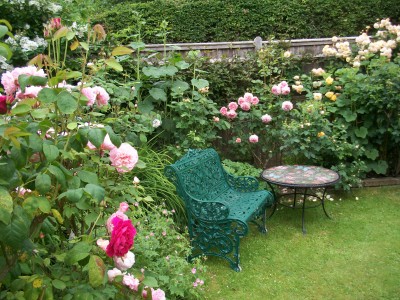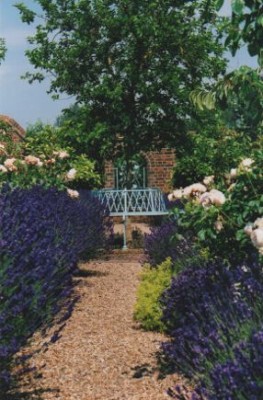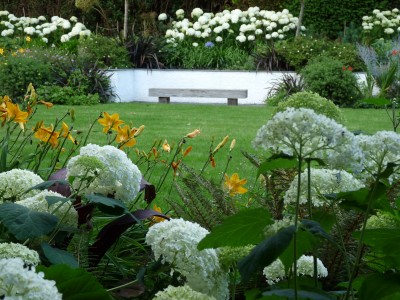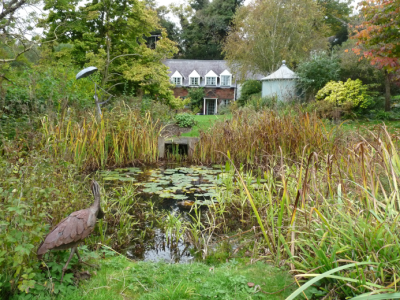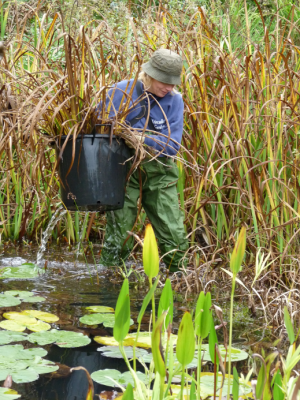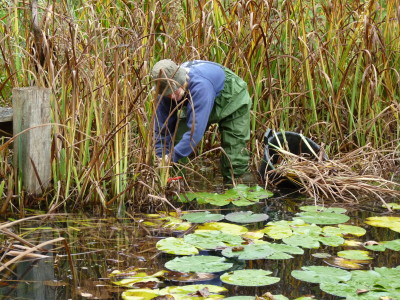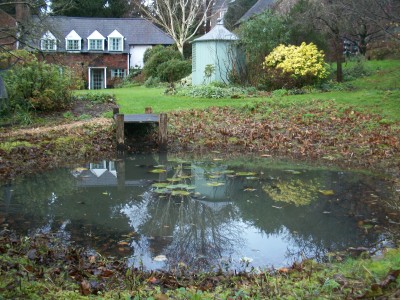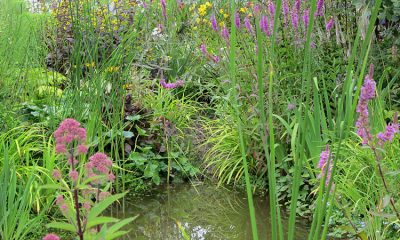
A good wildlife habitat
As the clocks go back autumn is well and truly under way and winter is just around the corner. Traditionally autumn was a time for the keen gardener to cut down, sweep up and make the garden tidy for winter. However our understanding of the needs of the wildlife that live and visit our gardens is much greater and most of us want to garden in a way that will encourage and help the many species that rely on gardens to survive the winter ahead. So here are some helpful hints to help the wildlife in your garden.
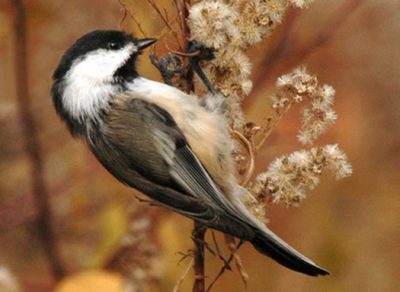
seedheads are an important food .
The not so tidy gardener: leave herbaceous plant seed heads to stand over the winter, only cutting them down in early spring, these are an invaluable food soruse for birds small mammals and over wintering insects can take refuge through the winter.
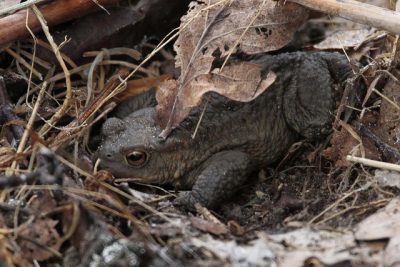
toad hibernation habitat.
Similarly do not go completely mad removing every fallen leaf from the garden, the odd pile at the back of the border, or under the hedge, or piles raked to the edges of paths or in heaps on noncultivated bits of ground are wonderful hibernation habitats for a range of creatures including, amphibians, frogs,toads and newts. Reptiles like slow-warms and of course for small field mice and other mammals as well as a good habitat for intersects of many species.
Try to find room in your garden for the odd pile of small twigs and even logs, again in the corner of a border or down by the compost heap, somewhere where the piles will not be disturbed, if the piles are large enough and have leafs piled through them they may even turn out to be a suitable hibernation spot for a hedgehog to carry out it’s over wintering hibernation. Sadly Hedgehogs are becoming an increasingly rare sight in domestic gardens and we must all do our bit to try to create the right habitat for them.
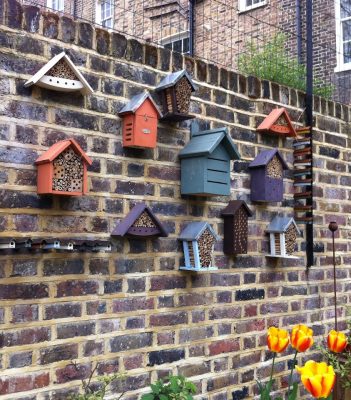
a group of ‘Bug Hotels’
Many other species will also use these twig/stick and log piles from a mass of different insects to over wintering bees, small mammals, reptiles and amphibians. A more decorative solution may be to hang a ‘bug hotel’ from a fence post or up under the eves of your house roof.
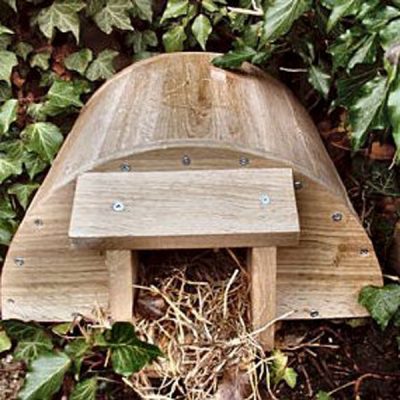
Hedge hog house
There are also ready made hedgehog houses on the market, these should be placed in a quite sheltered place away from any disturbance, including the local cats and any dogs. The hedgehog house should be in a position where it will not be disturbed through the winter months and preferable somewhere it can stay long term. The other big problems for Hedgehogs is habitat loss, the domestic garden is an important habitat but with implementable close board fencing now being the norm for garden boundaries rather than the porous garden hedge, the hedgehogs are struggling to move about the garden environment and are not able to have the size of territory they require for a healthy existence. So if you have a sturdy fence then think about cutting a small gap say 100/150mm wide by about the same high or a little bigger at a few points down your fence and on the corresponding side of the garden to allow hedgehogs to freely roam.
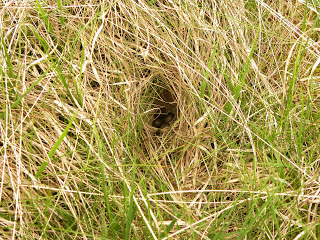
mice nesting in long grass.
Grass cutting, consider leaving the grass longer at the edges of the lawn perhaps 4 to 6 weeks growth, to allow a different habitat for over wintering species. Also if possible is there an area of grass that you can let grow to seed and leave uncut till early spring, this will become an invaluable area for insects, reptiles, amphibians and small hibernating field mice, particularly if this taller area of grass can edge a hedge or shrubby area.
Winter Feeding, from bird tables to nut and seed feeders to fat balls, and a whole range of bird feeders that are now squirrel proof, the market is flooded with all sizes and types to suit every situation and bird and gardener. Make sure you site the feeders well, not just for your enjoyment to see the birds from the kitchen, but also at a good height where the birds will not fall pry to the local cats. Also put out a low pot or bird bath for the birds, With both the feeders and bird bath it is very important to keep them regularly clean to prevent the spread of disease
So now you have an excuses not to be such a tidy gardener, and I hope these suggestions have inspired you to do your bit in your garden this autumn to help the animal species that live in and visit your garden get through the winter weather, be it a mild southern one or one with the odd attic blast.
For more information see www.rhs.org.uk/advise/wildlife for general information about helping wildlife in your garden. Also see www.rspb.org.uk/birds-and-wildlife for help and information on bird food types for what bird species and for advise on different types of bird feeders

